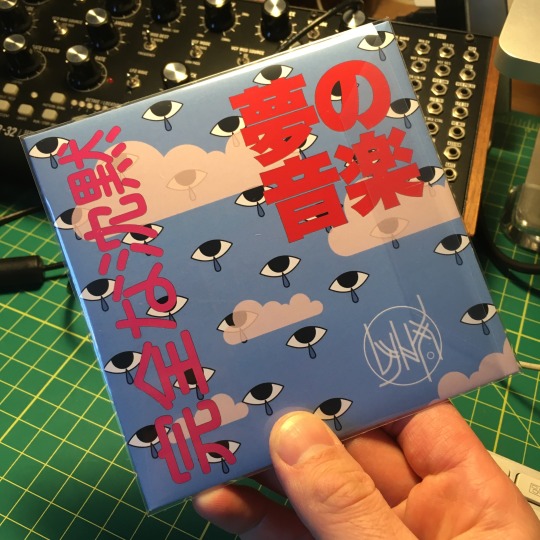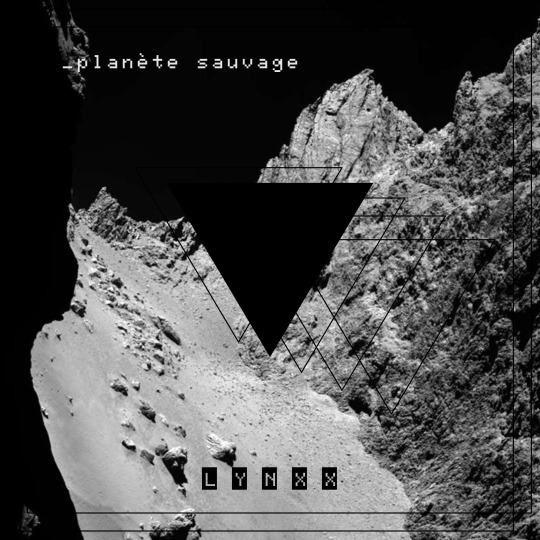Don't wanna be here? Send us removal request.
Audio
Listen/purchase: Complete Silence: Dream Music - 完全な沈黙: 夢の音楽 by LYNXX

0 notes
Text
Two Pieces (it’s a start).
They say you should “write what you know,” so I figure a short discussion of my own, recent work is as good a place as any to start. That said, in sticking with my own philosophy on the matter, I should point out that for me writing music is not so much a vehicle for delivering a message as it is for receiving a synthesis of knowledge and illumination from the creative process. I don’t ever really feel that my music means anything in particular, or has encoded in its structure some special meaning that will be apparent only to an initiated few (the classic “you have to know the following things in order to understand it” routine).
I think of composing as the creation of catalysts for potential meaning. This is achieved in response to our creative impulse by molding the ether of inspiration with craft and purpose through cognizant choices, and allowing our work to be infused with limitless variations of meaning by those who enter into communion with the results of those choices. This special communion could be the execution of a performance of the work, the experience of seeing and/or hearing the work performed, a study of the work on paper or through dialog or some combination of these manifest scenarios.
In other words, I am much more interested in what I stand to learn from my work (about myself, the world, creation), than in making some presumption that I have anything particularly profound to tell anyone. Even if there were a standard set of tools with which one could—with relative conformity—decode so abstract a medium as sound, we would be left then to decipher the inherent limits and inadequacies of descriptive language. (Thoughts on experiential versus intellectual understanding reserved for another time).
This viewpoint sometimes throws me into a dilemma that is agitated when someone asks the inevitable question, “Oh! What kind of music do you write?” I don’t think I’m qualified to know or answer in a meaningful way, and as soon as we think we are we have stopped allowing ourselves to think creatively.
Indeed, while inspiration informs the work, I don’t think we need to say that what inspired it is what the work is about. Inspiration is not a molecular structure that is meant to be transmitted and received from the material itself, nor can it objectively be heard there without copious explanation or justification by the composer. I think: being told what you’re supposed to hear in a piece of music (or, let’s say, see when you interact with a work of visual art) subsequently limits its real potential for meaning and possible depth of substance. It is an exclusionary and perhaps elitist practice, and in many cases serves more as a failsafe against a work’s lack of honesty and quality than a legend to inspire understanding.
To popularly quote Miles Davis, “If you understood everything I said, you’d be me.” It is easy to cite profound examples in creatively ascended individuals like Ornette Coleman, whose struggles with notation and language never allowed him to completely articulate what may have simply been inexpressible concepts in his work; gossamer bonds strung between points in the constellation of space, performers, instruments and other factors that enveloped the performance of each piece, whether in the recording studio or on the stage. Context defined the expression of the work. (See Coleman’s fluidic use of the word “unison” when imploring his collaborators to bring themselves to the music in ways the charts could not indicate).
For me, inspiration exists in parallel with the work it inspires. It compliments it, resonates with it, allows for its existence but it is not material or elemental in the new work’s particular, phenomenological dimension. It is there like the memory of a dream. While the dreamer may do their best to explain the setting, events and emotional atmosphere they experienced—distorted by the entropy of memory recall and the limit of their savvy for description—the dream falls away as a separate object and the description emerges as something new and unique.
Just as Coleman’s concept of unison served to ignite spontaneous collaborative energy that could be heard in the work if not pinpointed in theoretical terms, perhaps the source of a work’s creation need only be a footnote to inspire further reading, rather than a frontispiece that makes claims about what it is in advance. It should be information that beckons the listener to rise to a new level and expand their perspective, rather than an immutable, Platonic archetype that condescends to us uninvitingly.
Imagine then if we could each experience the same dream, and then upon waking explore its substance through discourse and reflection. The basis or topic of the dream’s narrative would serve as a reference used to enhance the experience we take away, in combination with the experience we brought with us.
So, presented below and absent of any implied inherent meaning are my two most recent pieces, with brief descriptions of their various, inspirational references.

“Complete Silence: Dream Music - 完全な沈黙: 夢の音楽” is a twenty-five minute triptych of sonic meditations that mixes simple, lo-fi synthesizer sounds with spacious field recordings. The title is inspired by a mysterious Twitter post by @archillect-aesthetic made sometime in 2019 that showed the phrase "complete silence" in white Japanese lettering on a black background, likely a screen capture from an old Japanese film.
The titles 'Vedic Hymn' and 'Themes for an Aztec Moralist' (the inner and outer movements) are borrowed from the great Mexican poet and Nobel Prize laureate Octavio Paz (1914-1998), while 'Totemic Self-Portrait' (the central movement) is taken from a paper on Outsider Art by Roger Cardinal [“Toward an Outsider Aesthetic,” 33-34]. In this case, Cardinal's analysis was being referenced by Emily Olson (2008) in her own paper on the surreal paintings of Mexican outsider artist Enrique Chavarría (1927-1998), to whom the track owes its inspiration.
Gear: MicroKorg, DigDugDIY Waifu Reverb, Deadbeat Echolocation Station, DOD Gonkulator Ring Modulator, Novation Circuit
, Tibetan Bowls, Antique Clock Chime, Loose Change, Glass Jar.

'_planète sauvage' is a seven track, twenty-seven minute EP, the title of which is taken from the iconic, animated film of the same name by René Laloux (1973). This work is a collection of small and minimal pieces inspired by infinite solitude, primordial isolation, Cyclopean mental structures and the impossibility of imagining or comprehending alien concepts, even when confronted by them.
Tracks 3 and 6 sequentially use the title, "Hymns of the Bene Gesserit" and are made in homage to the fantastic world of Frank Herbert's DUNE.
Gear: MicroKorg, DigDugDIY Waifu Reverb, Deadbeat Echolocation Station, DOD Gonkulator Modulator, Korg Volca FM Synthesizer, Novation Circuit, Michael Rucci Maximal Drone
Cover Image Credits: ESA/Rosetta/MPS/UPD/LAM/IAA/SSO/INTA/UPM/DASP/IDA
1 note
·
View note
